How to insulate the floor on the balcony?
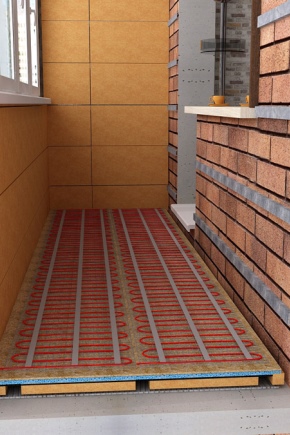
The balconies are a small outdoor seating area in the summer. From a small space, you can make a wonderful corner for relaxation. However, it should be borne in mind that there will be no point in insulating the floor if the balcony remains open to the outside. Therefore, before insulating the floor, you need to close the balcony. Warm floor on the balcony is simple and cheap.
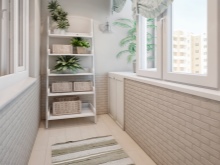
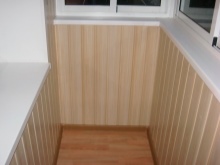
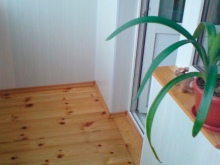
Underfloor heating device
If you want to make floor insulation, you can't do without special tricks and technologies. There are many ways to insulate the floor on the balcony, but one of the most effective is using the "warm floor" system. The main feature of this invention is that it works on the principle of the so-called heating pad. This is a very useful invention, because it is forbidden to install a heating system on balconies that works by pumping water. All this is for the safety of the building.
This method of insulating a balcony is widely used by clients who have a habit of catching colds often. It is also extremely effective for people with allergies and bronchial asthma. The fact is that the floor, although it increases the temperature of the air around it, has practically no effect on the humidity of the latter due to the fact that it has a relatively low surface temperature. Also, when using such floors, the amount of dust in the insulated room is significantly reduced. An extremely useful characteristic for allergy sufferers and asthmatics.

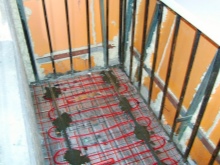
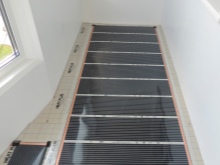
Peculiarities
Heat transfer along the floor is carried out using an electric cable, which is also a heating element. Next, we insulate the entire device from the inside with a concrete screed within 3-8 cm. It is important to note that when assembling the heating element, the distance between the cables inside must be uniform. This will help to distribute heat evenly and also increase the assurance that the cable will not overheat.
The most important thing in such an assembly is that when insulating the floor, the cable does not need to be laid immediately, but on a kind of heat insulator. As a heat insulator in Khrushchev, you can use a simple aluminum foil with an artificial material attached to it. This is done so that the warm air flows only upward, that is, onto the insulated balcony. If you ignore this advice, then in the end it turns out that some of the heat will warm the neighbors from below the ceiling.
Heating elements are of two types - single-core and two-core cables. They differ in physical characteristics and electromagnetic conductivity.

In order to make high-quality insulation of the floor on the balcony, it is necessary to use cables of fixed length. The main secret is that the power of the heat release depends on the length of the heating element itself. Therefore, if you lay the cable under the tile, then you need to take into account how well the ceramic retains heat. Another important element when calculating the cable is the thickness of the walls, the area of the room, and the presence or absence of a ceiling with a hatch.
Here are some technical tips to help you solve your calculations:
- If you plan to heat the balcony with the help of other heating devices, then the average power should be enough if it is in the range of 140-180 W per square meter;
- When installing other heaters, 80-150 W should be enough;
- In the presence of wooden floors, a power of 80-100 W will be sufficient.
These tips will help you save extra energy and prevent the heating element from overheating.
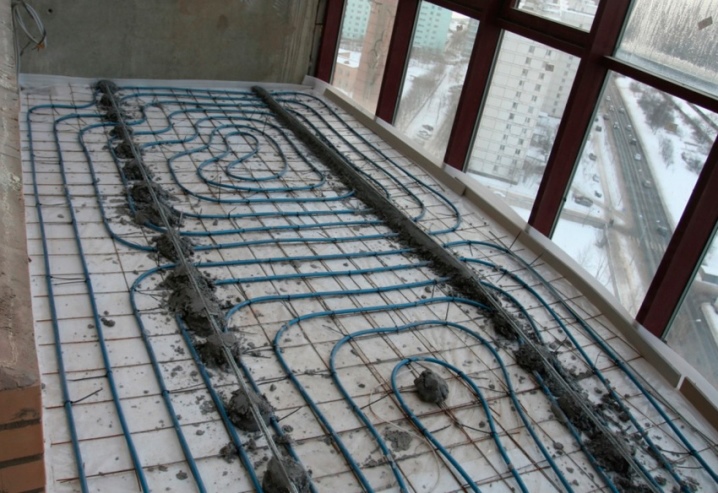
Types of coatings
To answer the question of how to insulate the floor on the balcony, you also need to know which floor will retain more heat. Nobody wants to waste half of the electricity, and they would also like the coating to last as long as possible.
The leaders in heat transfer are considered to be floors covered with ceramic tiles. It is a well-known fact that ceramic tiles, like bricks, are capable of retaining and retaining heat for a long time. Also, ceramics is a fairly durable material.

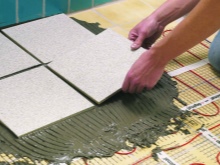
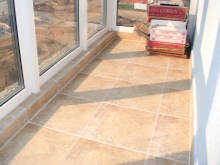
Ceramic tiles are followed by linoleum or carpet. These two materials retain heat slightly worse, but change them in case of deformation is much easier than ceramic materials like slabs.
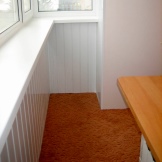

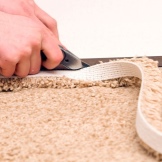

Wood flooring is in the last place on the list for heat dissipation. These coatings do not retain heat in the best way, moreover, they are extremely short-lived. With constant heating, the wood dries up and soon the wood flooring will disappoint you. Such a coating also has a small advantage - it is a quick change in its temperature. That is, it will be much faster to warm up a wooden floor "from scratch" than its counterparts in the form of ceramic tiles and linoleum.
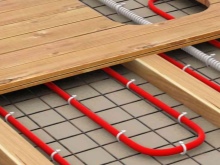
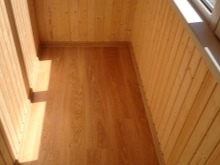
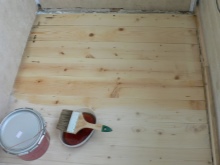
Features of the structure
It is necessary to lay the foil on the floor, but it is extremely important to cover all the gaps between the floor and the adjacent wall with putty. There is one more important rule to remember when insulating your balcony floor. Do not place the heating element directly on top of the foil. There must be a thin layer of cement between the foil and the cable. This moment must be fulfilled and in no case ignored, because this is part of the safety precautions.
If you want to make the concrete screed as flat as possible, then use a better level. Draw a uniform line on the wall using this device - a limiter along which you will be guided when pouring concrete. Next, fill the floor, leave a spare 0.5 cm and level it. This distance is necessary in order to use the so-called "liquid floor". An excellent invention that, when dry, will give an absolutely flat floor, and will save you a lot of time and nerves.
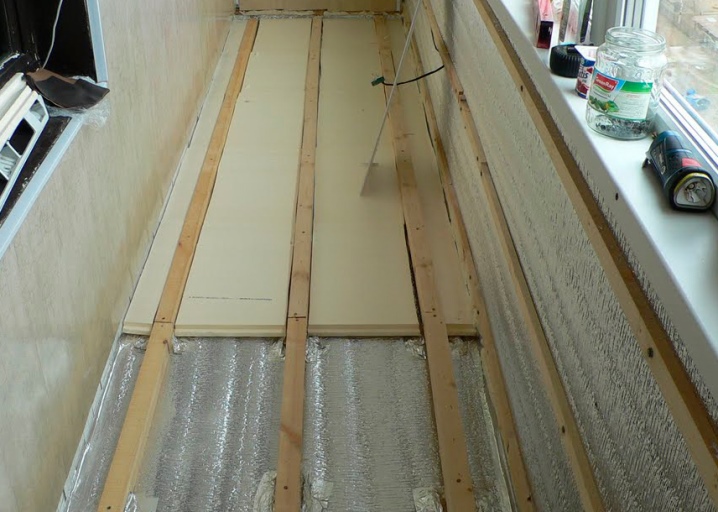
How to insulate?
It is not enough to run the heating element across the floor. Consider also the materials that will best retain heat. Today there are a lot of such materials. There are, both expensive and beautiful, and very cheap, and inconspicuous.
This type of insulation is called passive, since it does not use any cunning devices and is rather primitive. The basic principle is that the material itself is installed in the places that you want to insulate. Due to its properties to keep warm and not let the cold out from the outside, this option is great for people with an average income.
Here is a list of the most popular and affordable building insulators:
- penofol;
- Styrofoam;
- foamed polystyrene foam;
- mineral wool.
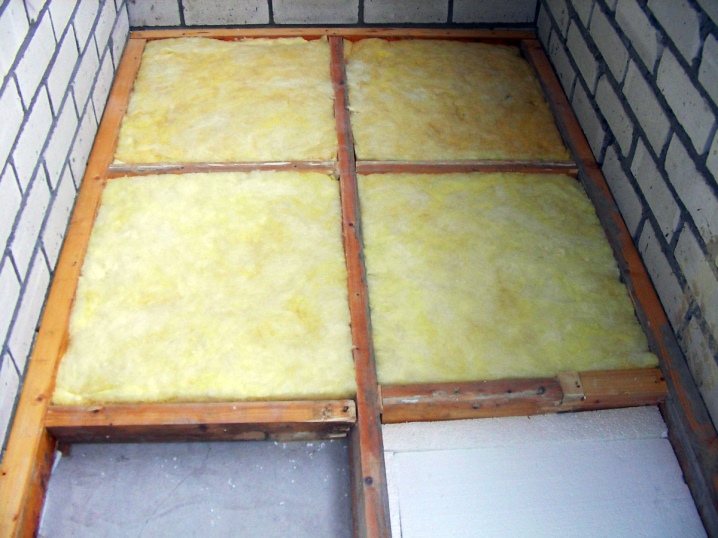
The most advanced and innovative material is penofol. This material is a polyethylene foam covered with a protective aluminum film. This substance is quite flexible, so it is extremely convenient to work with such a coating. There are two types of foam foam - with one-sided aluminum coating and double-sided.
Naturally, double-sided penofol has a wider range of useful qualities. One of them is protection against condensation formation. The production of the material and its storage is carried out in rolls, therefore, a special aluminum film is used to eliminate the joints.There is no need to be afraid that in case of bending it will deform, therefore this invention is at the top of the list for keeping warm and convenient in work.
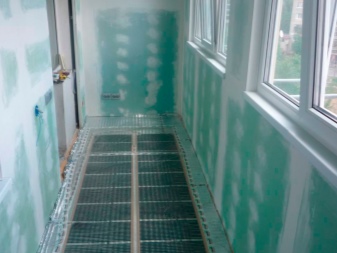
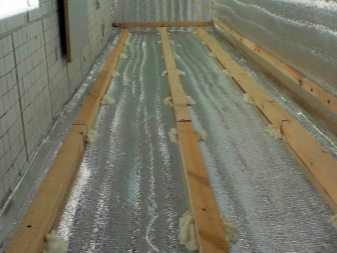
If you want to achieve the maximum result in floor insulation with the help of a minimum cost, then among the materials, foam is best suited. It is considered the cheapest and most common, as insulation, along with penoplex. In addition, it is easily accessible, and it is extremely easy to transport it due to its extraordinary lightness. The advantage of foam is that you can get this substance of any size and thickness. However, among the downsides is that it is quite tough and fragile. When working with him, this must be taken into account. Otherwise, the cost of purchasing a thermal insulator will exceed the expected cost.
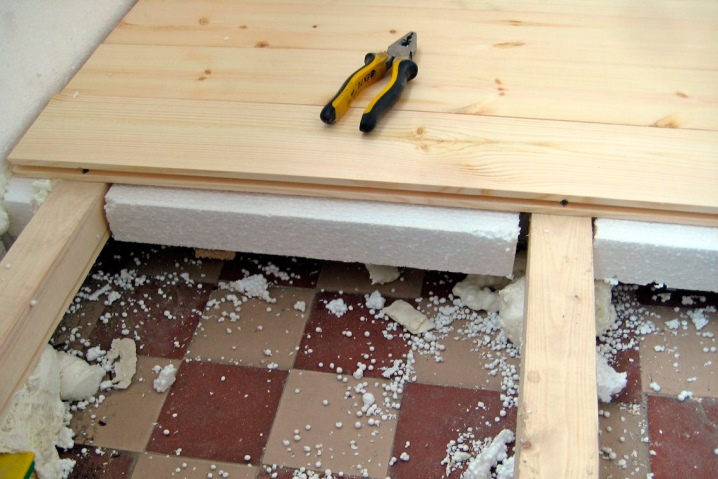
Another analogue of foam is extruded polystyrene. This material is practically the same cost as regular foam. Initially, it was created just for insulation and has become widespread due to its availability and low cost. Unlike pure foam, extruded polystyrene is more flexible and lightweight. Its main advantages are that it does not rot, is not subject to inflammation, and fungus and mold do not start in it.
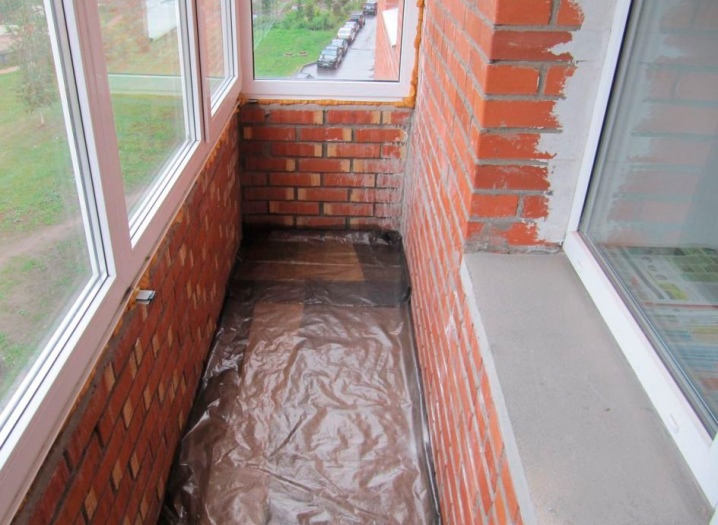
One of the oldest, most reliable and proven materials on this list is mineral wool. Basically, it is made from fiberglass, although it happens that it is also made from basalt threads. The main difference and indisputable advantages is that mineral wool does not absorb moisture, does not burn, in general, does not react to almost any chemistry, and is also not a receptacle for mold and other living organisms. A huge plus is that it, like the material, is soft and can be used anywhere. Even though the coating is crooked, rock wool will handle it perfectly.

It is important that due to the special structure of the material, it is necessary to work with gloves in order to avoid unpleasant sensations. The fact is that the substance from which the cotton wool is made consists of fibers that are fragile and sharp in nature. On contact with the skin, they break off immediately, causing itching and discomfort. Therefore, it is imperative to observe safety precautions and wear gloves.
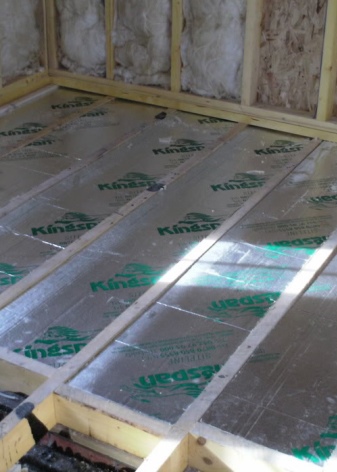
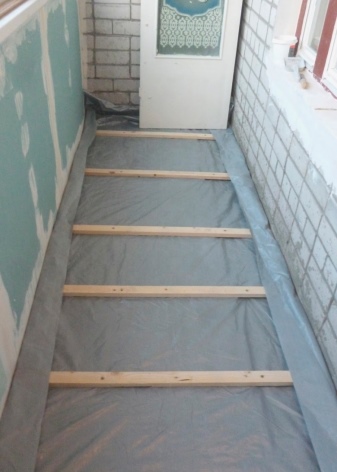
Preparation
It is imperative to start with the preparation of the floor. In order to properly make thermal insulation and not waste all efforts in vain, it is important to consider that the floor should be as even as possible and not contain cracks.
Experts advise to make a floor screed before starting insulation work. However, before proceeding with this preparatory stage, the administration of the house should clarify whether it will be safe to weight the balcony. If they give their consent to the repair work, then it will be possible to get down to business without fear. Otherwise, you will have to level the floor and cover up the cracks in another way.

How to insulate with your own hands?
For insulation, some options are available to us using expanded clay. The main thing to learn here is that, despite the strength of the house, you should not overdo it with the screed. You need to make it as thin as possible. Thus, the coating must be just thin enough so that it does not crack, and it must be quite durable. Basically, repairmen use expanded clay and perlite in their arsenal to carry out this kind of work. However, pearlite is not always convenient to use when space is limited. This is due to the fact that perlite needs to be kneaded in a concrete mixer. For this reason, more often expanded clay is used in confined spaces.
Here's a step-by-step guide to help you prepare the solution yourself:
- Three parts of refined sand, because the solution should last more than one year, so it is recommended to use only construction sand, and not recruited "in nature";
- One part of expanded clay and one part of cement. In the case when there is a need to reduce the specific gravity of the solution, then part of the expanded clay is reduced;
- One tenth of lime.
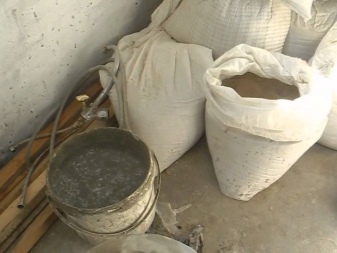
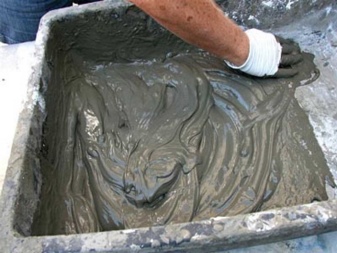
Typical mistakes
Most people make common mistakes when insulating a floor. Here are some tips to help you avoid them:
- All received materials must be mixed in a container convenient for you. After the mixture becomes homogeneous, you will need to gradually pour in water and continue to stir the solution. The mixture will be ready when it resembles thick sour cream in density. It is important not to overdo it with the addition of water, because if there is too much of it, then the solution will not only dry out for a long time, but the quality of the screed may also suffer from this, and it will not last as long as planned.
When self-styling, it is important to adhere to simple rules. It is important to insulate the balcony around the perimeter. This is done using polyurethane foam or special self-adhesive tape.
- You also need to start not from the middle, but from the far corners of the balcony. During work, it is necessary to constantly monitor the level of the floor using a building level in order to avoid unevenness in the floor. After completing the work, you must wait until the surface is completely dry. It usually takes two to three days for the floor to dry, but if you want to achieve maximum screed strength, there is one trick. Within 10-12 days, you need to moisten the floor twice a day, while covering it with foil. Thus, the floor will acquire the highest strength.
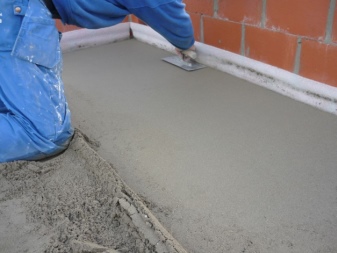
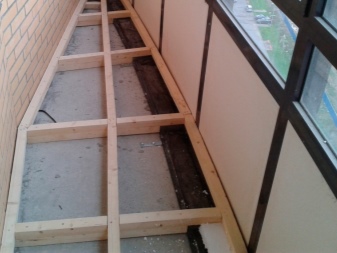
Recommendations
It is best to insulate the floor on the balcony in the summer, and not in the winter, since during construction it is necessary that the moisture evaporates faster in order for the solution to "grab" better.
The "warm floor" system will be the best to keep warm. This is very convenient, since you yourself can regulate the temperature of the floor on the balcony. Now reaching room temperature on your balcony has never been easier!
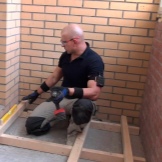
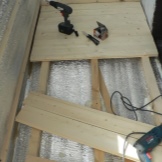

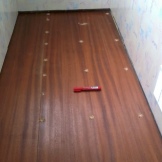
In conclusion, we offer a visual video tutorial on the topic.













The comment was sent successfully.